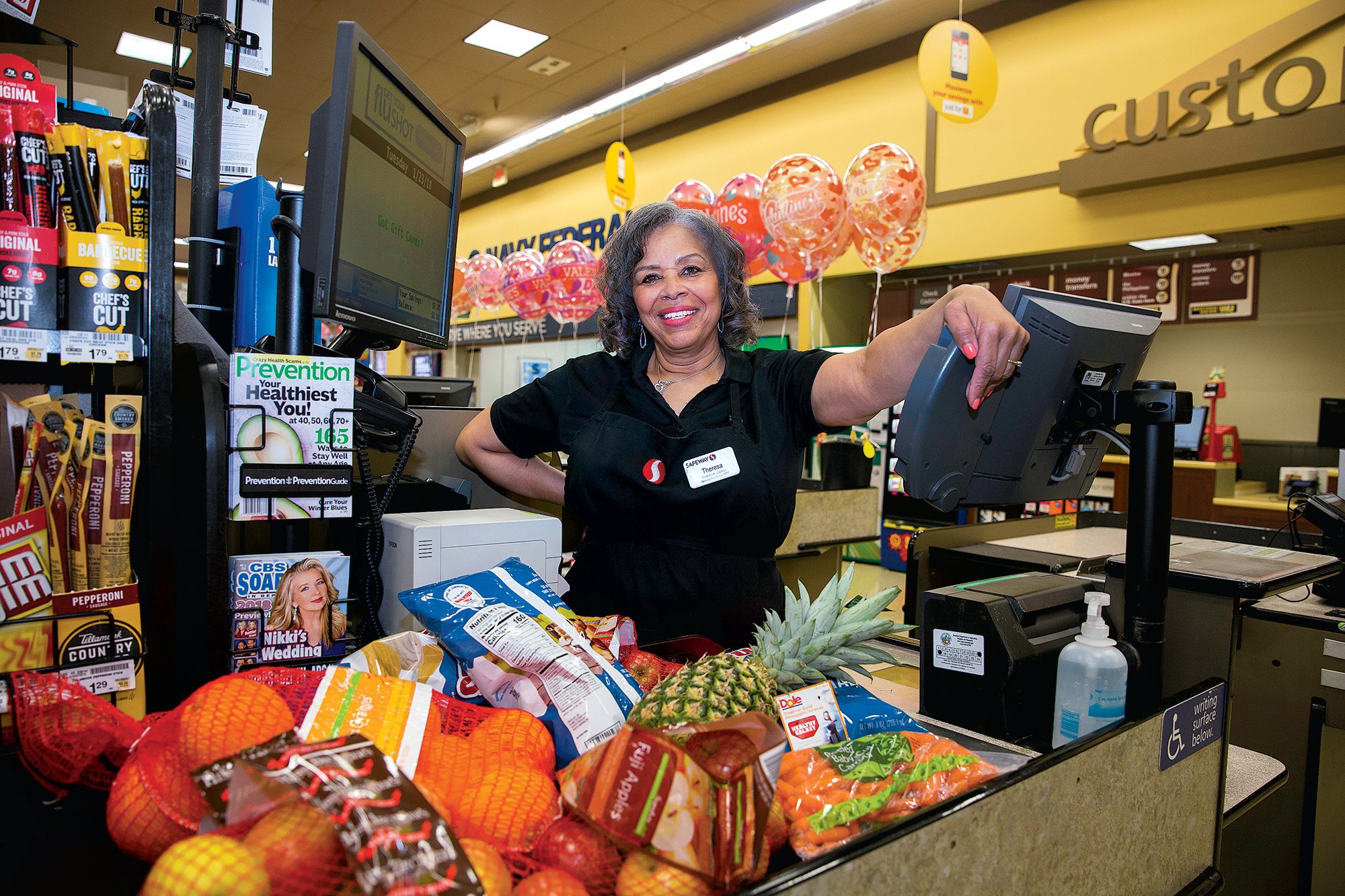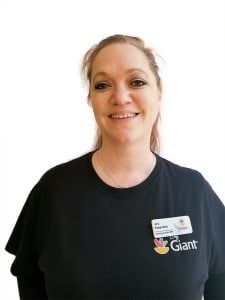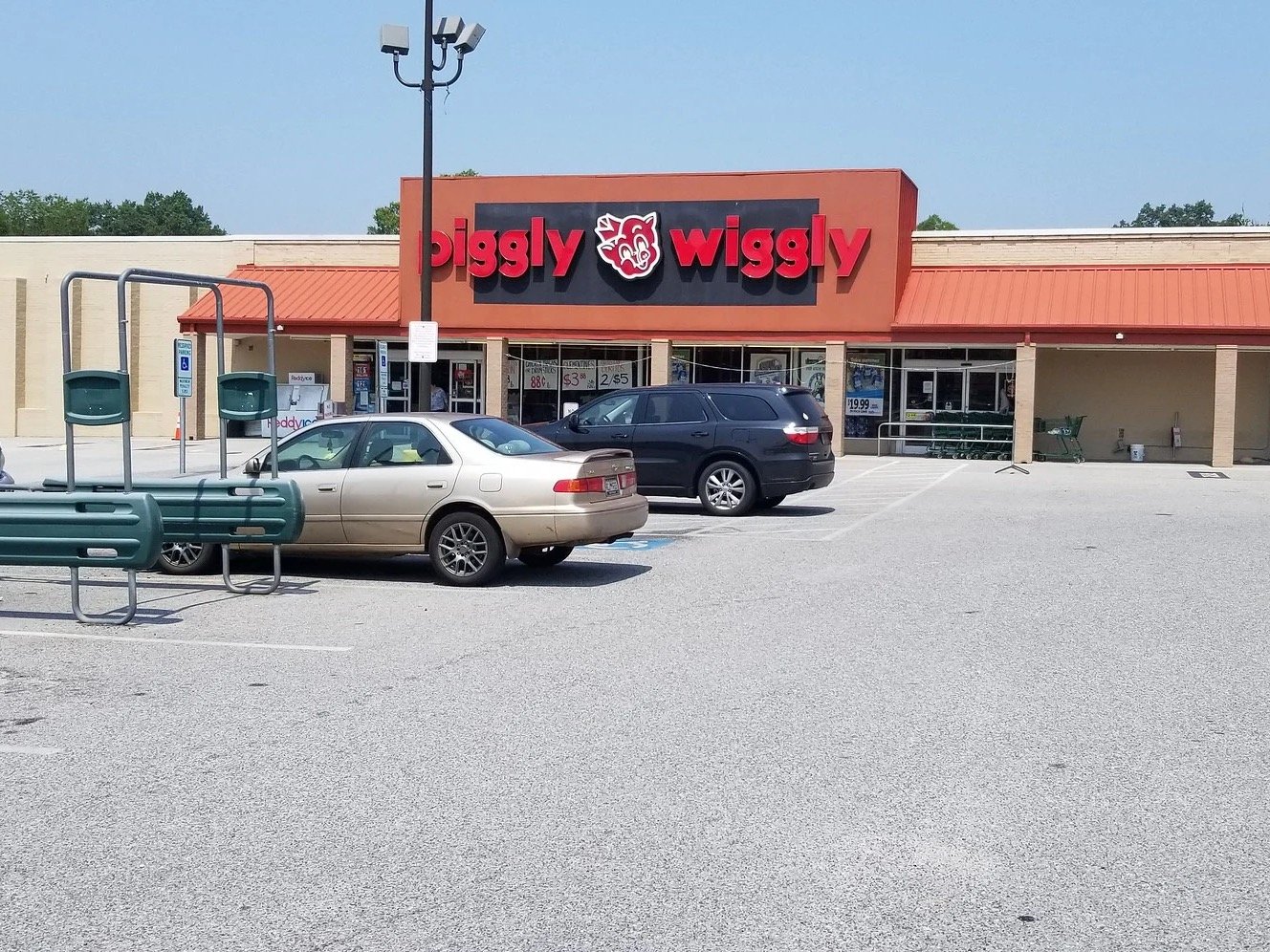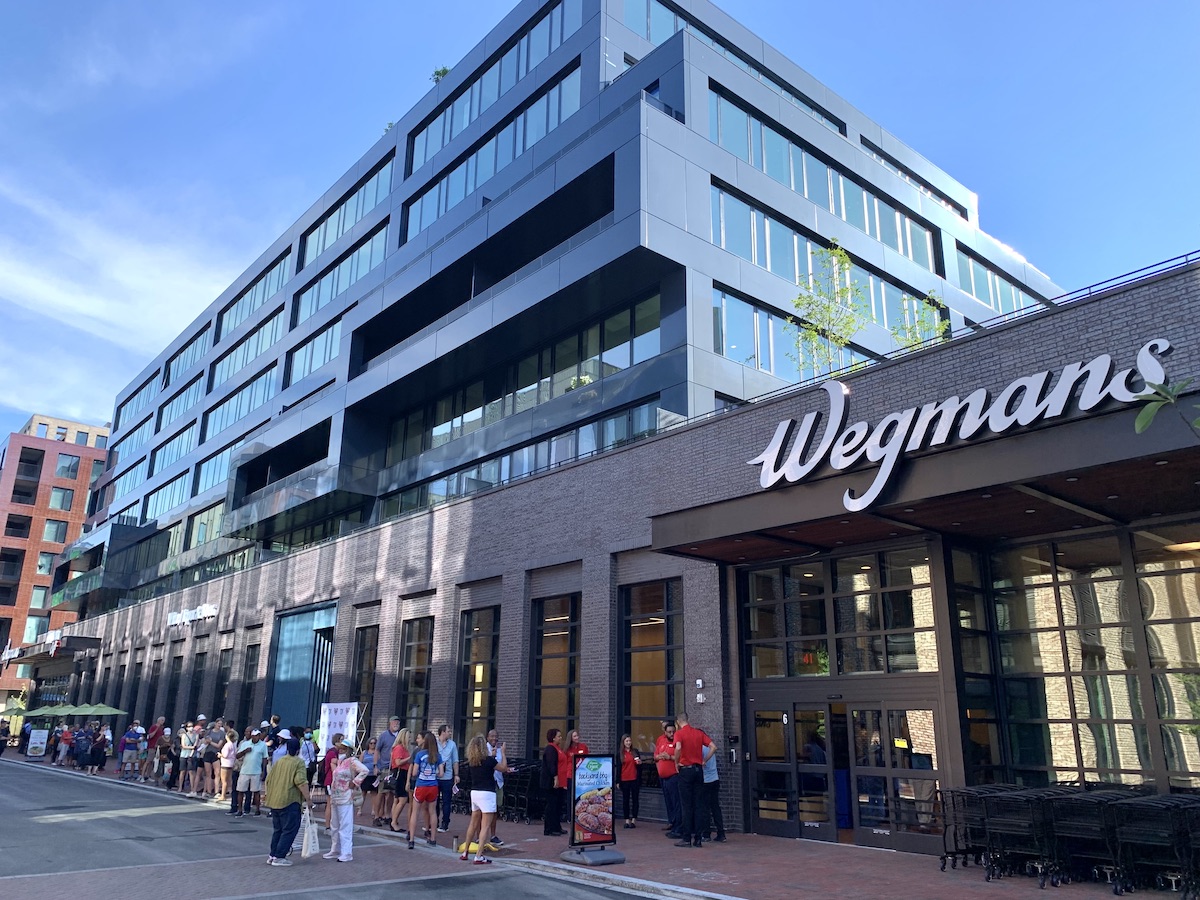To read more about how grocery stores have shaped Washington, click here.
Except for a decade as a floral-department manager, Theresa Weeks has been working a register at Safeway since 1977. On a break at the store on Fairwood Parkway in Bowie, she talked about how customers, groceries, and the work itself has changed.
What was being a cashier like before there were scanners?
Oh, my God, every item was marked with a price. There was a circular belt—as we would push the motor bar with our upper thigh, the belt would turn in a circle and the items would come to us. There were only three departments—meat, grocery, and produce. There were three buttons—red for meat, green for produce, white for grocery. We used one hand: You’d touch with your thumb the department you wanted, tap the price with your fingers, then hit enter with your palm. If you had three of the same thing, you hit enter, enter, enter with your palm. We knew the prices of things. We knew bananas were 29 cents a pound, but we didn’t have as many products as we do now. And we counted the change in our heads—we didn’t have the register to remind us how much to give back.
What else has changed?
After someone’s groceries were all bagged up, they were loaded onto a conveyer belt and would go outside. People would pull their cars up to the front and point to which bucket of paper bags was theirs.
Are there products you see come down the belt that make you marvel, compared with the old days?
The size of potato-chip bags. At first they were probably four ounces. Now they’re family-size. And we did not have all the variety. We had Lay’s, maybe Utz. Bon Ton potato chips—I remember those. Now you have all these manufacturers.
I do marvel at some of the vegetables and fruits. We have a diverse customer base here. Yuca root: What do you do with yuca root? It’s an education when you’re checking folks out. We have conversations: “How do you prepare this?” I’m very talkative.
Do you think customers have changed?
I do. Everybody wants everything yesterday. That’s a good way to say it. Everybody is in a rush. The main thing I’d like customers to realize is we are people, too. So they need to exercise some patience with us and know that we can’t control why the price is not correct or why your check didn’t go through or why the lines are so long. Just be kind to us, because that’s my job—to give you the best of me.
 Kavita Patel
Kavita Patel
Whole Foods
Director of local purchasing, deciding which local products hit the shelves at 54 Mid-Atlantic stores
What do people do to get your attention?
Sometimes people go overboard and send boxes and boxes of samples. Folks think the more samples they give me, it will make a difference. But it’s about being able to taste the samples at the right time with the right people.
How many new products do you try in an average week?
I’d say between 25 and 35. We tend to go big when we’re opening a new store; if that’s the case, we can try 100 products over a week.
What’s the worst product you’ve tried recently?
I won’t name names. It may have been a granola. I think the oil they used to cook the granola had gone rancid, so immediately you just want to spit it out.
 Joy Stueckler
Joy Stueckler
Giant
Computer-automated-ordering clerk
What does a CAO clerk do?
I walk the aisles every day to make sure inventory levels are correct. I pull products from the back [to restock] so consumers can get what they want when they want it.
What’s one thing shoppers often don’t know?
If you want to try something, ask me. I’ll open the package. If you’re walking through produce and there’s a star fruit and you say, “What’s this? Can I try this?” Most definitely. Just ask someone.
Do you get complaints from customers who can’t find things on the shelf?
I get that a lot: “You moved that.” I’ll say, “No, honey, it’s in the same spot.” A lot of times, if one little thing changes, they think you changed the whole aisle. Or a lot of times, the packaging changed.
This article appeared in the March 2018 issue of Washingtonian.


 Kavita Patel
Kavita Patel Joy Stueckler
Joy Stueckler

















